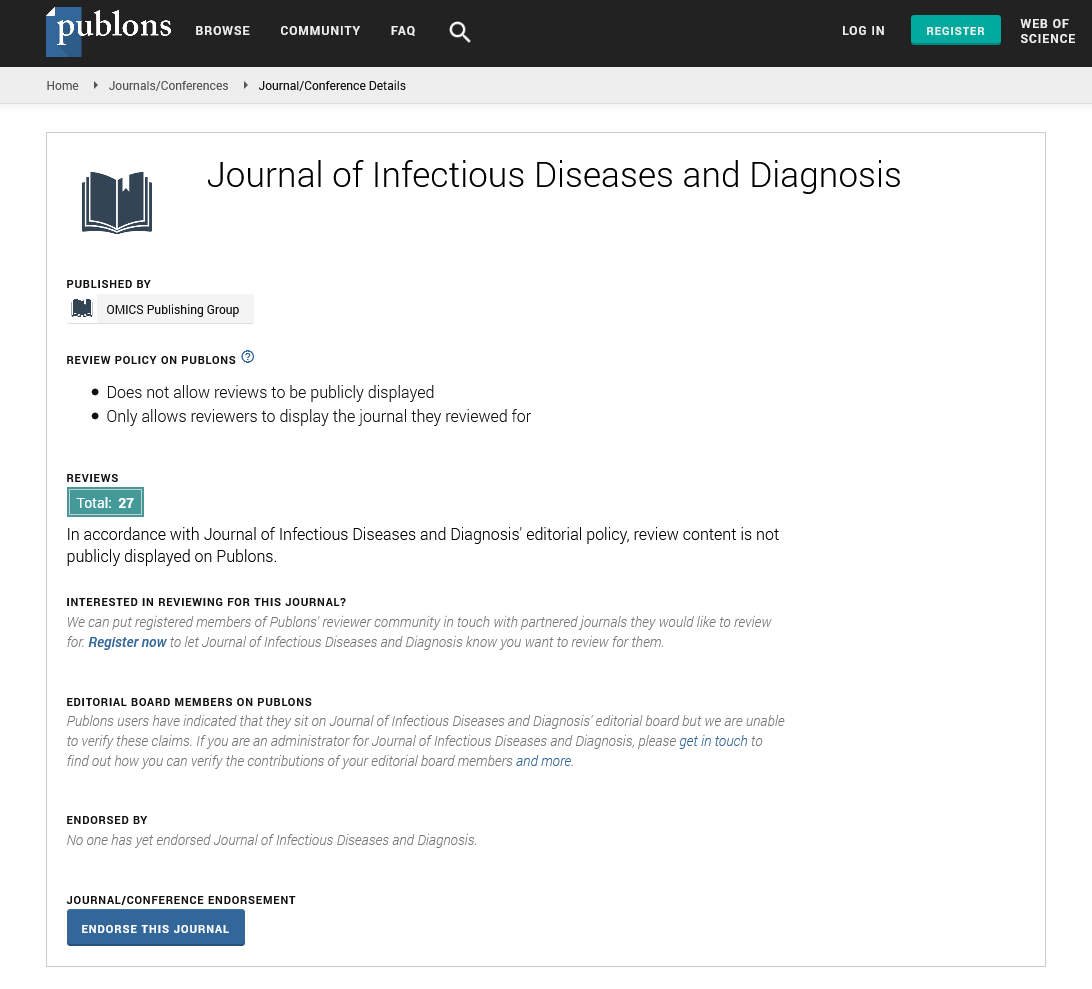Indexed In
- RefSeek
- Hamdard University
- EBSCO A-Z
- Publons
- Euro Pub
- Google Scholar
Useful Links
Share This Page
Journal Flyer

Open Access Journals
- Agri and Aquaculture
- Biochemistry
- Bioinformatics & Systems Biology
- Business & Management
- Chemistry
- Clinical Sciences
- Engineering
- Food & Nutrition
- General Science
- Genetics & Molecular Biology
- Immunology & Microbiology
- Medical Sciences
- Neuroscience & Psychology
- Nursing & Health Care
- Pharmaceutical Sciences
Opinion Article - (2024) Volume 9, Issue 6
Chronic and Acute Hepatitis: Understanding the Variability in Disease Outcomes and Treatments
Miraka Tamami*Received: 28-Oct-2024, Manuscript No. JIDD-24-27714; Editor assigned: 30-Oct-2024, Pre QC No. JIDD-24-27714 (PQ); Reviewed: 14-Nov-2024, QC No. JIDD-24-27714; Revised: 21-Nov-2024, Manuscript No. JIDD-24-27714 (R); Published: 29-Nov-2024, DOI: 10.35248/2576-389X.24.09.306
Description
Hepatitis is an inflammation of the liver, often caused by viral infections, but it can also result from other factors such as alcohol use, autoimmune conditions and certain medications. Among these, viral hepatitis remains the leading cause of liver disease worldwide. The five main types of viral hepatitis are Hepatitis A, B, C, D and E, each caused by distinct viruses and they differ significantly in their transmission, impact and management strategies.
Types of hepatitis
The five main types of viral hepatitis are:
Hepatitis A: Hepatitis A is primarily transmitted through the consumption of contaminated food or water, especially in areas with inadequate sanitation. The virus causes an acute infection that typically resolves on its own. While the disease is often mild, it can lead to severe liver inflammation in some individuals. There is an effective vaccine available for Hepatitis A, which has significantly reduced its incidence in many regions.
Hepatitis B: Hepatitis B is transmitted through contact with infected blood, semen, or other bodily fluids. It can be spread through sexual contact, sharing of needles, or from mother to child during childbirth. The virus can cause both acute and chronic infections. Chronic Hepatitis B can lead to long-term liver damage, cirrhosis and even liver cancer. Vaccination against Hepatitis B is widely available and has been effective in reducing new infections, but the virus remains a major public health concern, particularly in parts of Asia and Sub-Saharan Africa.
Hepatitis C: Hepatitis C is primarily transmitted through blood- to-blood contact, most commonly through sharing needles or receiving contaminated blood products. Unlike Hepatitis A and B, the majority of individuals with Hepatitis C develop chronic infections, which can lead to severe liver damage over decades.
The development of Direct-Acting Antiviral (DAA) medications has revolutionized treatment, offering a cure for many patients with Hepatitis C. However, the virus remains prevalent in certain high-risk populations and screening efforts are ongoing.
Hepatitis D: Hepatitis D, also known as the delta virus, is unique in that it can only infect individuals who are already infected with Hepatitis B. It is transmitted in similar ways to Hepatitis B and co-infection with both viruses can lead to more severe liver disease. There is no specific vaccine for Hepatitis D, but vaccination against Hepatitis B prevents Hepatitis D infection.
Hepatitis E: Hepatitis E is transmitted primarily through the consumption of contaminated water, similar to Hepatitis A. The infection is usually acute and while most individuals recover fully, it can be life-threatening for pregnant women, particularly in the third trimester. Hepatitis E is endemic in regions with poor sanitation and access to clean water. A vaccine for Hepatitis E has been developed but is not yet widely available outside of endemic regions.
Global burden and public health impact
Viral hepatitis remains a major global health challenge, with an estimated 325 million people living with chronic hepatitis infections worldwide. The World Health Organization (WHO) has recognized hepatitis as a leading cause of liver-related morbidity and mortality, contributing to over 1.3 million deaths each year. The majority of these deaths are due to complications from chronic Hepatitis B and C, including cirrhosis and liver cancer.
The global burden of hepatitis is particularly high in low- and middle-income countries, where access to healthcare, vaccines and treatments is often limited. Hepatitis B and C, in particular, pose significant public health threats in these regions due to their potential for chronic infection and the lack of widespread screening and treatment programs.
Prevention and treatment strategies
Efforts to combat viral hepatitis focus on prevention, early detection and treatment. Vaccination is the most effective strategy for preventing Hepatitis A and B and widespread vaccination programs have been successful in reducing the incidence of these diseases, particularly in children. Hepatitis C, while not preventable through a vaccine, can be treated and cured with antiviral therapies.
Screening programs are essential for identifying individuals at risk of chronic hepatitis, especially for Hepatitis B and C, which can remain asymptomatic for many years. Early diagnosis and treatment can prevent liver damage and improve long-term outcomes. For Hepatitis D, managing Hepatitis B and preventing co-infection through vaccination remains the primary method of control.
Conclusion
Hepatitis is a significant global health issue that affects millions of people worldwide. While there is no cure for all types of hepatitis, advancements in prevention and treatment have significantly reduced the impact of the disease. Vaccination, early detection and antiviral therapies have transformed the management of Hepatitis A, B and C, offering hope for reducing the global burden of these infectious diseases. However, continued efforts to improve access to care, particularly in low-resource settings, remain essential in addressing the ongoing challenges posed by viral hepatitis.
Citation: Tamami M (2024). Chronic and Acute Hepatitis: Understanding the Variability in Disease Outcomes and Treatments. J Infect Dis Diagn. 9:306.
Copyright: © 2024 Tamami M. This is an open-access article distributed under the terms of the Creative Commons Attribution License, which permits unrestricted use, distribution and reproduction in any medium, provided the original author and source are credited.

